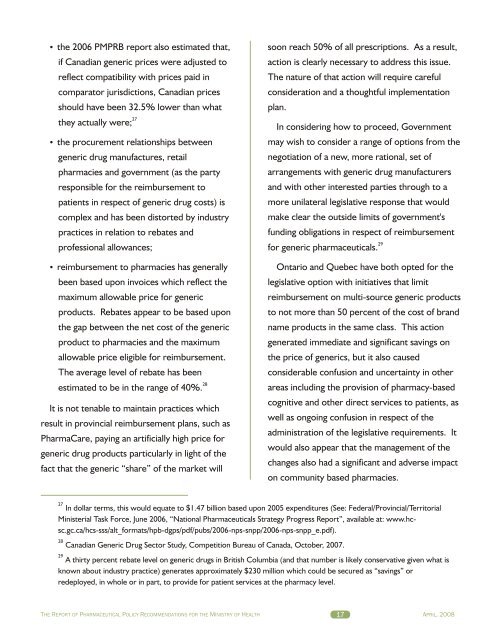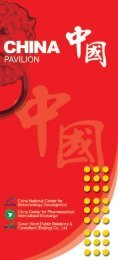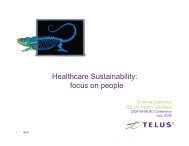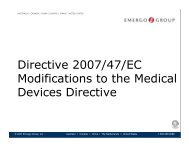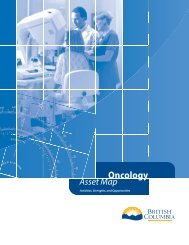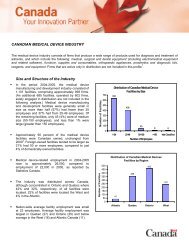Report - LifeSciences BC
Report - LifeSciences BC
Report - LifeSciences BC
- No tags were found...
Create successful ePaper yourself
Turn your PDF publications into a flip-book with our unique Google optimized e-Paper software.
the 2006 PMPRB report also estimated that,if Canadian generic prices were adjusted toreflect compatibility with prices paid incomparator jurisdictions, Canadian pricesshould have been 32.5% lower than what27they actually were;the procurement relationships betweengeneric drug manufactures, retailpharmacies and government (as the partyresponsible for the reimbursement topatients in respect of generic drug costs) iscomplex and has been distorted by industrypractices in relation to rebates andprofessional allowances;reimbursement to pharmacies has generallybeen based upon invoices which reflect themaximum allowable price for genericproducts. Rebates appear to be based uponthe gap between the net cost of the genericproduct to pharmacies and the maximumallowable price eligible for reimbursement.The average level of rebate has been28estimated to be in the range of 40%.It is not tenable to maintain practices whichresult in provincial reimbursement plans, such asPharmaCare, paying an artificially high price forgeneric drug products particularly in light of thefact that the generic “share” of the market willsoon reach 50% of all prescriptions. As a result,action is clearly necessary to address this issue.The nature of that action will require carefulconsideration and a thoughtful implementationplan.In considering how to proceed, Governmentmay wish to consider a range of options from thenegotiation of a new, more rational, set ofarrangements with generic drug manufacturersand with other interested parties through to amore unilateral legislative response that wouldmake clear the outside limits of government'sfunding obligations in respect of reimbursement29for generic pharmaceuticals.Ontario and Quebec have both opted for thelegislative option with initiatives that limitreimbursement on multi-source generic productsto not more than 50 percent of the cost of brandname products in the same class. This actiongenerated immediate and significant savings onthe price of generics, but it also causedconsiderable confusion and uncertainty in otherareas including the provision of pharmacy-basedcognitive and other direct services to patients, aswell as ongoing confusion in respect of theadministration of the legislative requirements. Itwould also appear that the management of thechanges also had a significant and adverse impacton community based pharmacies.27In dollar terms, this would equate to $1.47 billion based upon 2005 expenditures (See: Federal/Provincial/TerritorialMinisterial Task Force, June 2006, “National Pharmaceuticals Strategy Progress <strong>Report</strong>”, available at: www.hcsc.gc.ca/hcs-sss/alt_formats/hpb-dgps/pdf/pubs/2006-nps-snpp/2006-nps-snpp_e.pdf).2829Canadian Generic Drug Sector Study, Competition Bureau of Canada, October, 2007.A thirty percent rebate level on generic drugs in British Columbia (and that number is likely conservative given what isknown about industry practice) generates approximately $230 million which could be secured as “savings” orredeployed, in whole or in part, to provide for patient services at the pharmacy level.THE REPORT OF PHARMACEUTICAL POLICY RECOMMENDATIONS FOR THE MINISTRY OF HEALTH 17 APRIL, 2008


